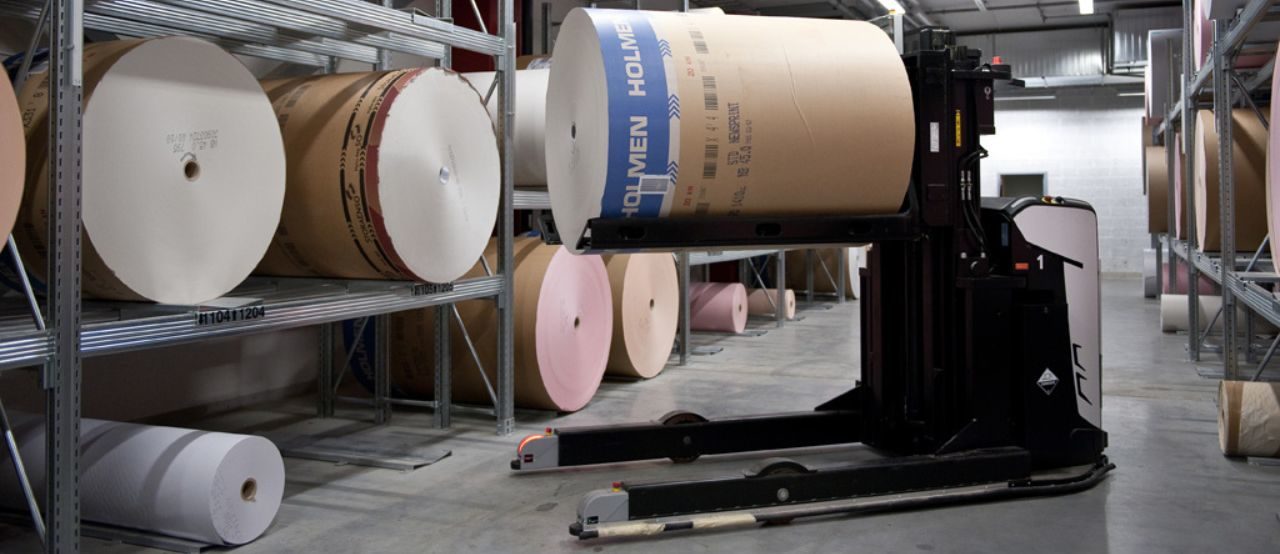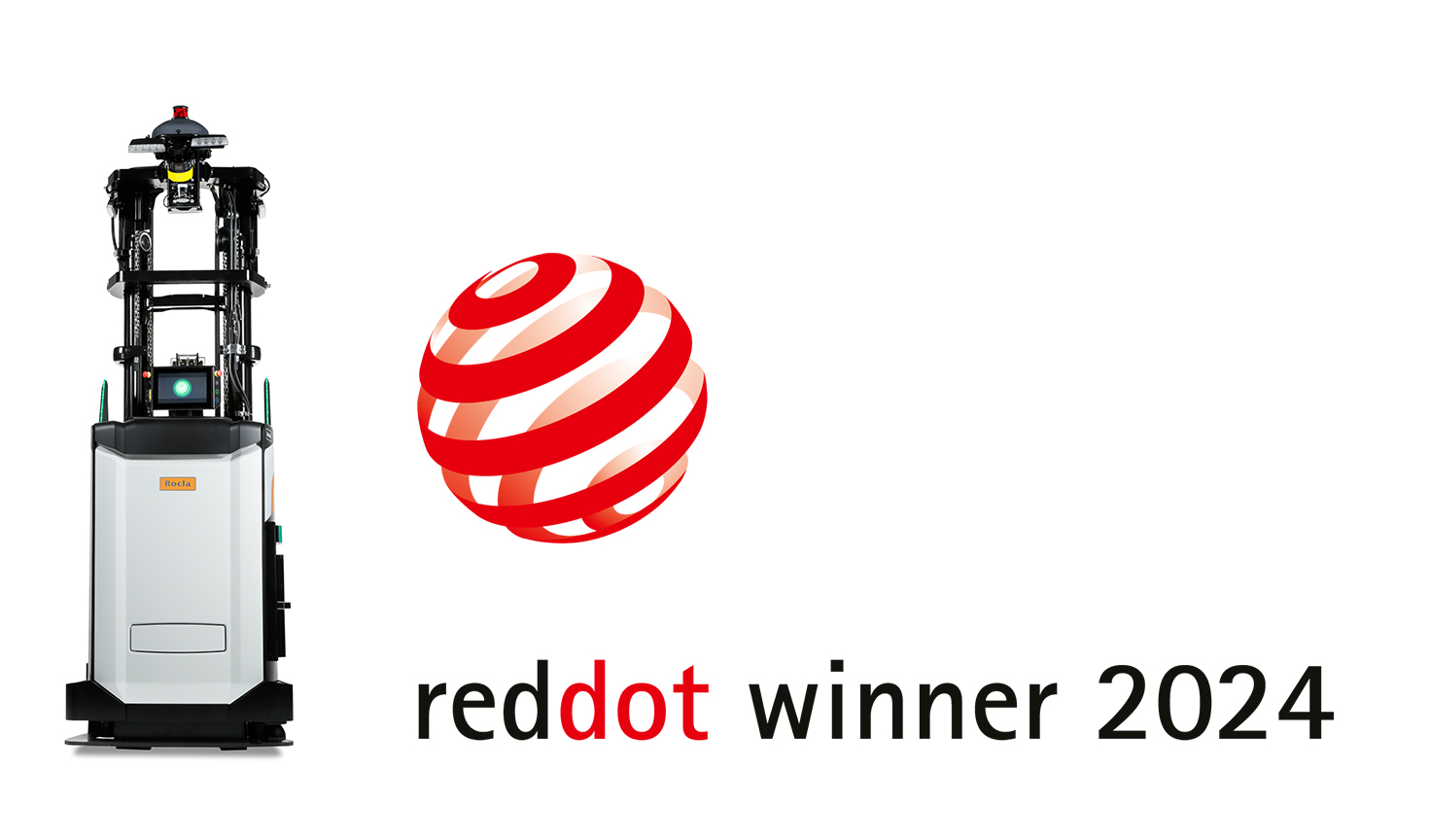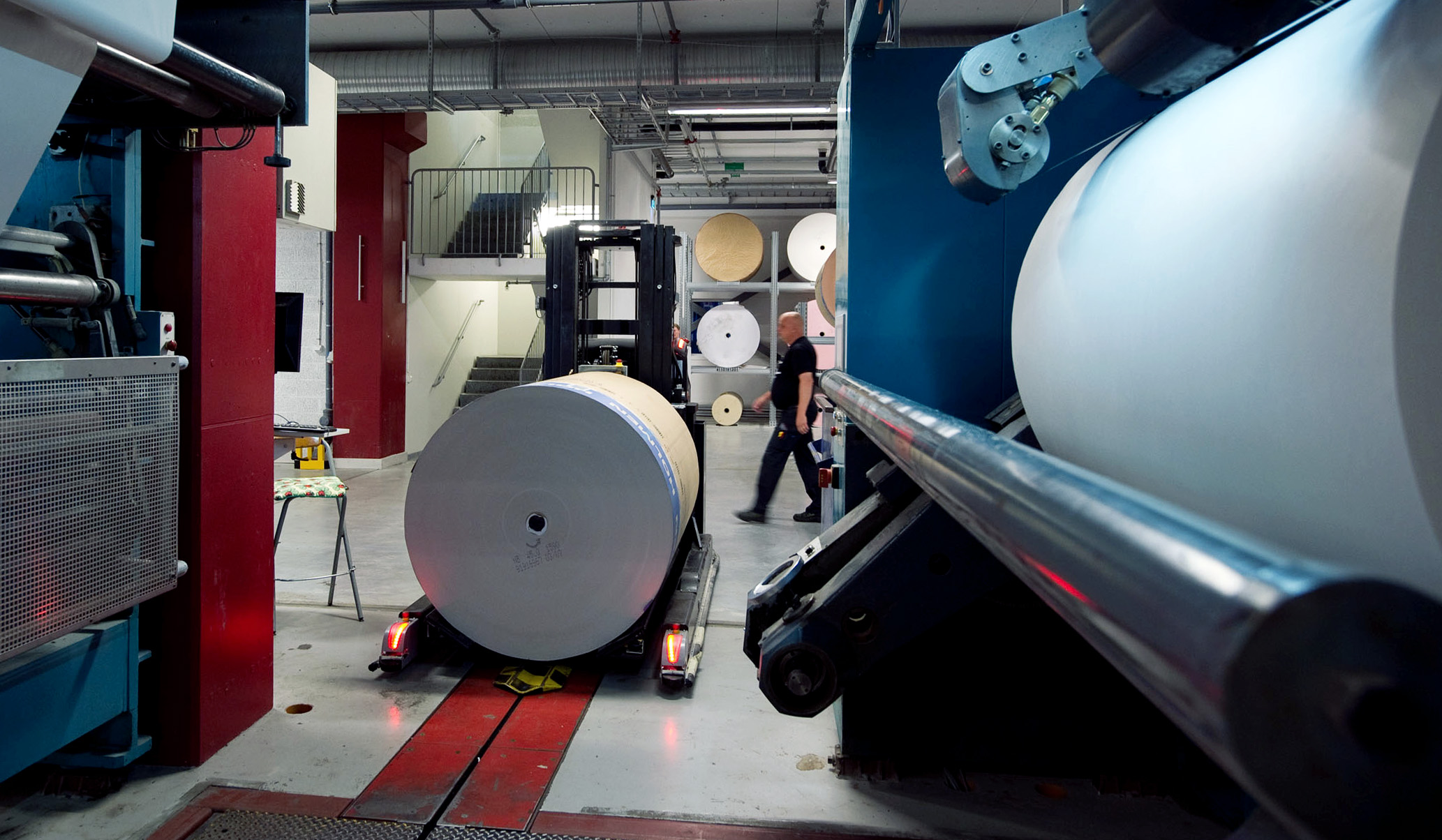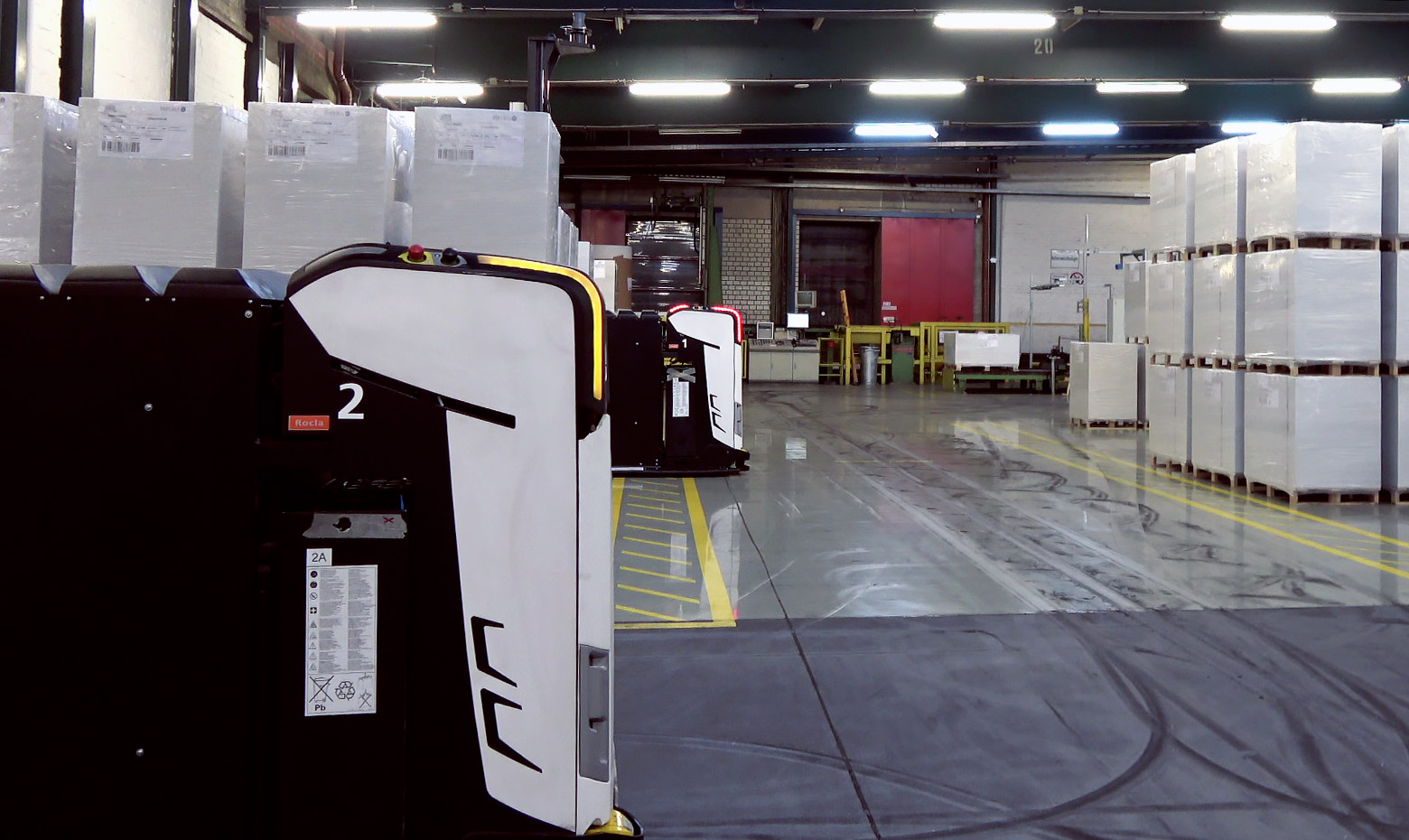V-TAB: Newspaper roll flow automation brings better reliability and saves time to the Swedish company
V-TAB has automated the internal flow of the newsprint paper rolls at its Landvetter printing plant. It uses Rocla’s automated guided vehicles, as they save on time and costs and handle the rolls carefully.

V-TAB, the largest newspaper printing group in Scandinavia, has built a major new printing plant in Landvetter, Sweden. It has not only automated much of the actual management process at the plant but also automated the way in which newsprint rolls are supplied to the printing presses. The new plant uses Rocla’s automated guided vehicle (AGV) system.
The main reasons the company has decided to replace the manual trucks used at the old plant are the high reliability of AGV technology – automated trucks do not call in sick or have bad days – and its precision, which eliminates the risk of damage to the 1.5-tonne newsprint rolls. These rolls are prone to damage to their edges if they land awkwardly on the concrete floor, deform to an oval shape if the clamping force is too strong, or rotate in their outer packaging if the clamping force is too weak.
When the rolls are ordered from the main warehouse, forklift trucks with clamp attachments transfer them to a preparation station, where the rolls are centrally prepared for printing. The rolls that are ready for printing are then read in the central WMS, warehouse management system, also supplied by Rocla, for intermediate storage; the fetch order is then given to the automated trucks to transfer them to the intermediate warehouse for prepared rolls.
“It is during the day that most of the intermediate warehouse is filled up, as this is when production is limited to the commercial production of advertising flyers,” Hans-Åke Stjernman, system engineer at V-TAB explains. “At night, the automated trucks take the paper rolls to the printing presses – and this process needs to be quick!”
V-TAB prints four kinds of newspapers, with different colours (pink to white) and with different grammages, which makes warehouse management more complicated. In the changeover from printing one newspaper title to the next, the paper rolls that have not been used are removed from the presses and are returned to the buffer warehouse by means of the automated trucks.
“The time-critical part of production is during the changeover between newspaper titles. This is why we have set up a buffer warehouse close to the presses, to decrease the time that the automated trucks take to discard rolls that have been used and to pick up the new ones,” Stjernman explains. “This saves us valuable time in production. Having a little extra capacity in our intermediate warehouse saves us even more time,” he adds.
“Other advantages of AGV technology include its precision and the careful way the rolls are handled. This enables us to prepare them into rolls that are ready for printing before they arrive at the printing press itself,” continues Mr Stjernman. “It is easier to handle and take care of the transport packaging after it has been removed, since we concentrate all of this work at one central preparation station rather than doing this right before we feed the rolls into each printing press. We also make better use of the full paper content of the rolls, because we avoid damage caused by manual truck handling.”
Enormous volumes of newsprint paper pass through the printing plant, so AGV technology saves large sums of money, since it ensures that the rolls are handled carefully. This benefit is due to optimal use of the rolls: the rolls do not have to be discarded because of clamping damage, and the printers do not lose thousands of running metres through damage to the edges.
Rocla’s WMS solution also helps to rationalize the administration of paper rolls arriving at the main warehouse, as the warehouse balance is updated automatically by transmission of the loading manifest electronically in XML for the rolls coming from the various paper mills.
Rocla AGV in use in VTAB Printing house

Want to know more? Contact us!
Lead Form
"*" indicates required fields


